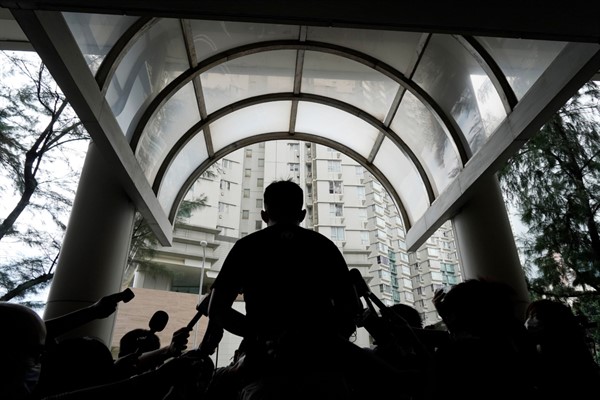More than a year ago, months into the escalating protests in Hong Kong, a reporter with a local television station, Tsang, put on a bulletproof vest for the very first time.* She had gone for a drink the night before, wondering if it would be her last. A few days earlier at a protest, a reporter standing next to her was hit in the eye and permanently blinded by a police projectile; on another occasion, her cameraman had yanked her from the spot right before a Molotov cocktail exploded at her feet.
The vest proved to be a wise decision. The marches that day in early October, on Chinese National Day, had been scheduled to draw attention away from a military parade in Beijing celebrating the 70th anniversary of the Chinese Communist Party’s rule. In a grim way, it worked: News that a Hong Kong policeman had shot an 18-year-old student protester in the chest grabbed international headlines, rather than the ceremony in Beijing. It was the first time the police force in Hong Kong had used live ammunition against demonstrators who had been protesting for months demanding that Beijing respect the territory’s autonomy.
But Tsang did not know that yet. The newsroom’s manpower had thinned out that October evening, as staff dispersed to cover the protests erupting in different districts of Hong Kong. She had been paired with a new co-worker, one who had trouble putting on his gas mask and didn’t know when or where to take cover in the streets as tear gas and rubber bullets filled the air around them. “We are in a war,” she yelled in frustration, her voice muffled by the mask and drowned out by the chaos.

